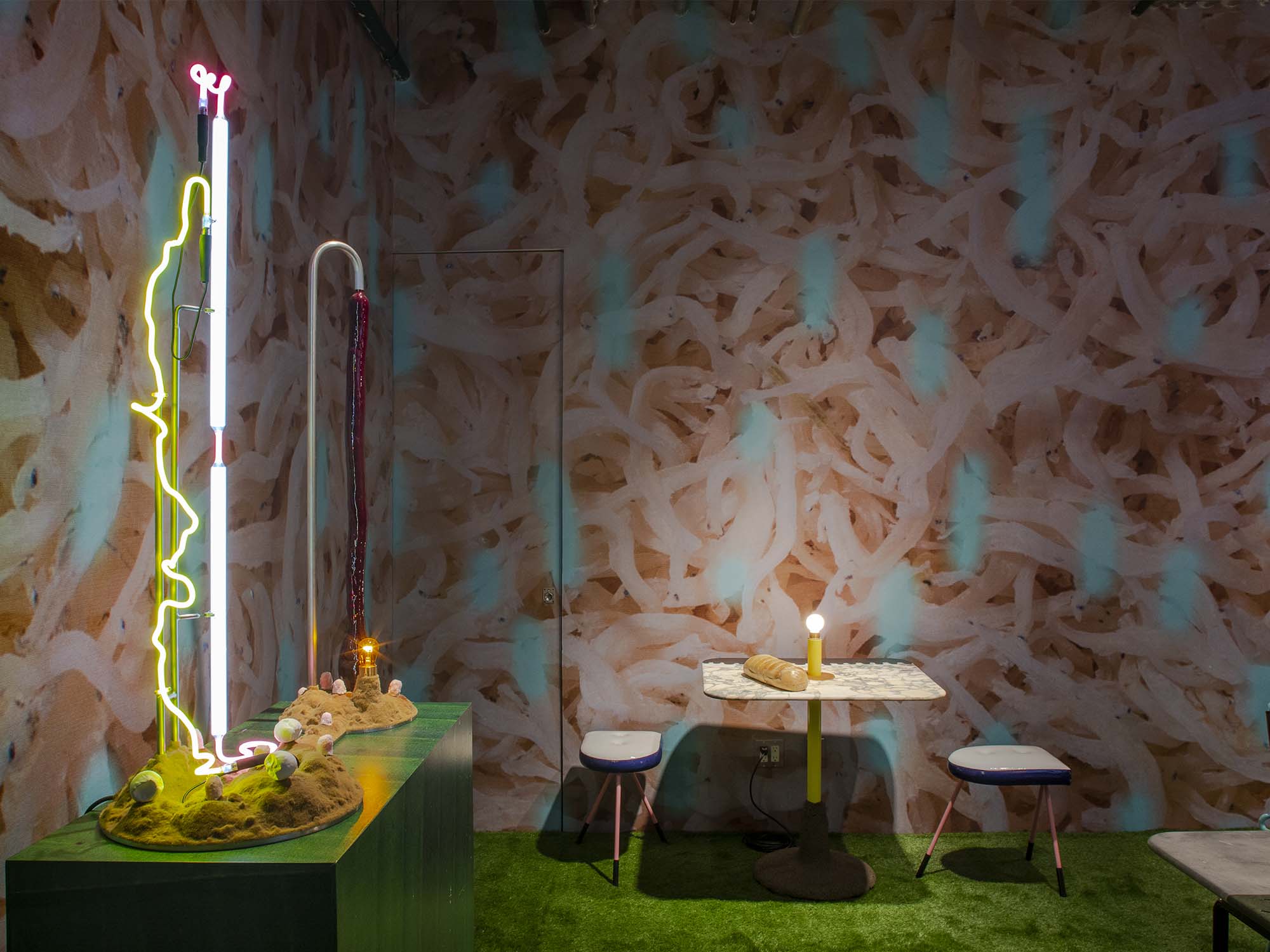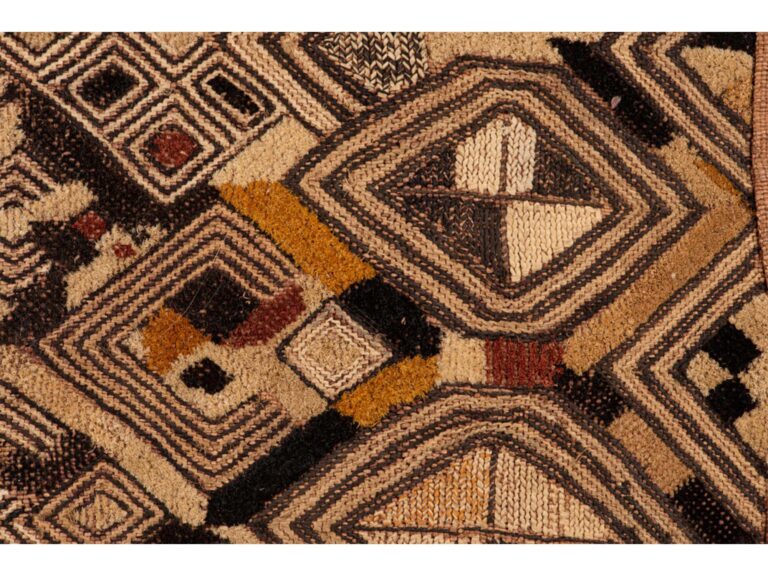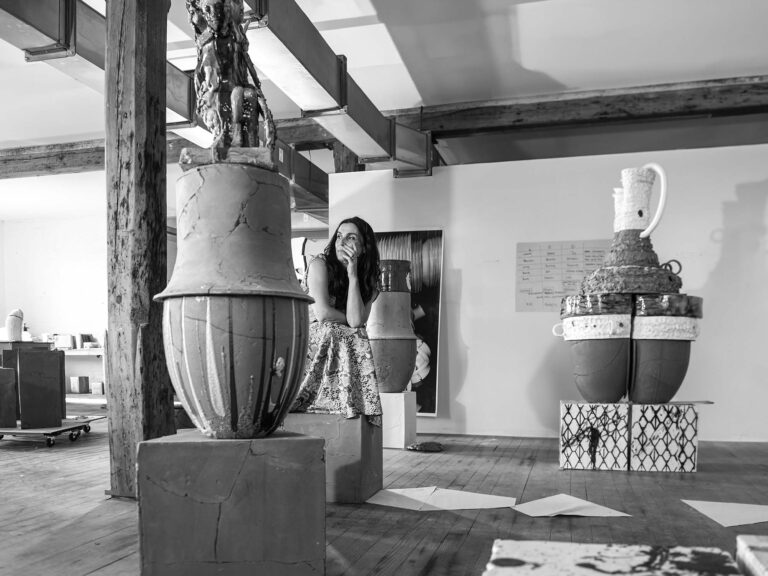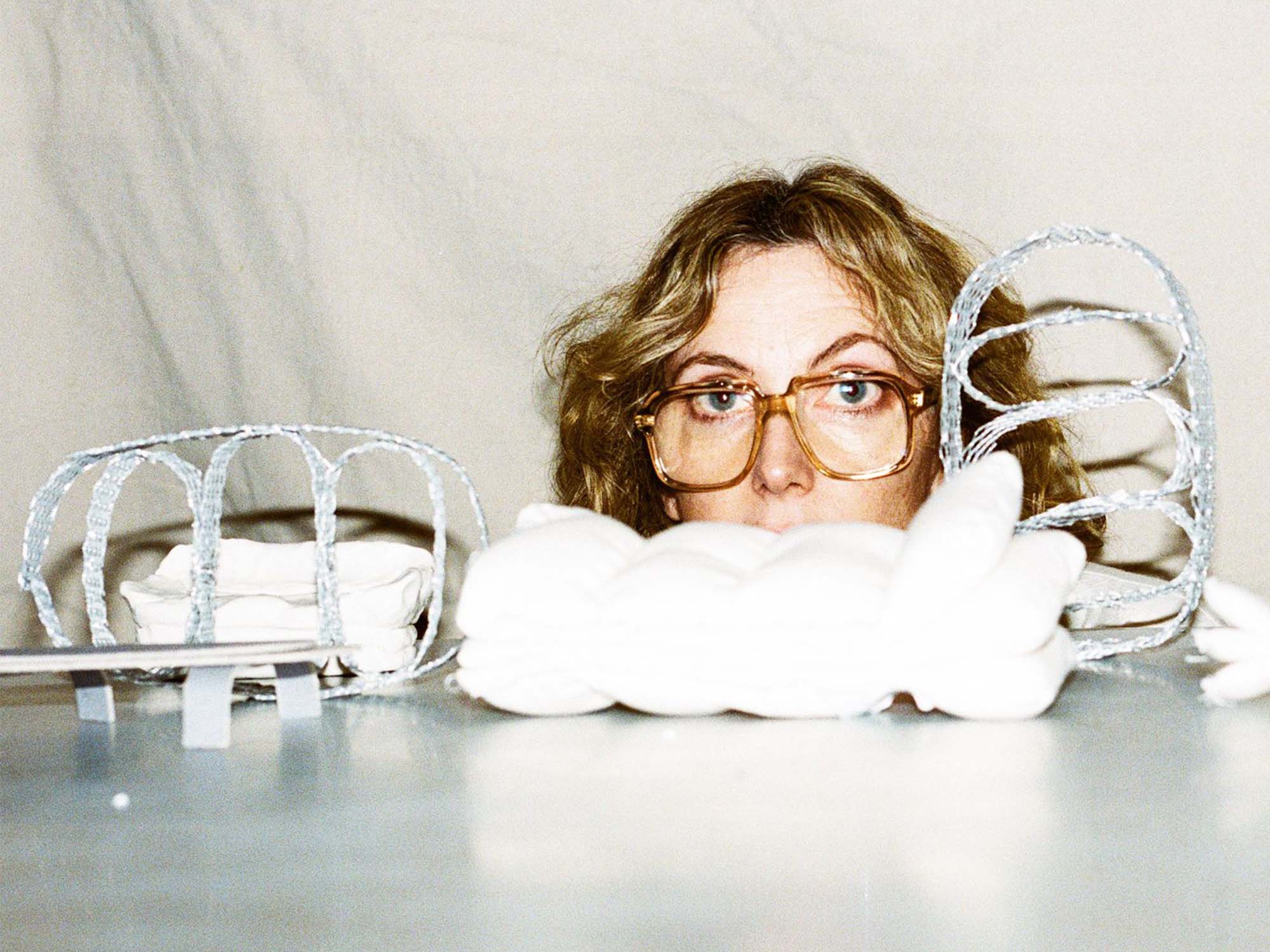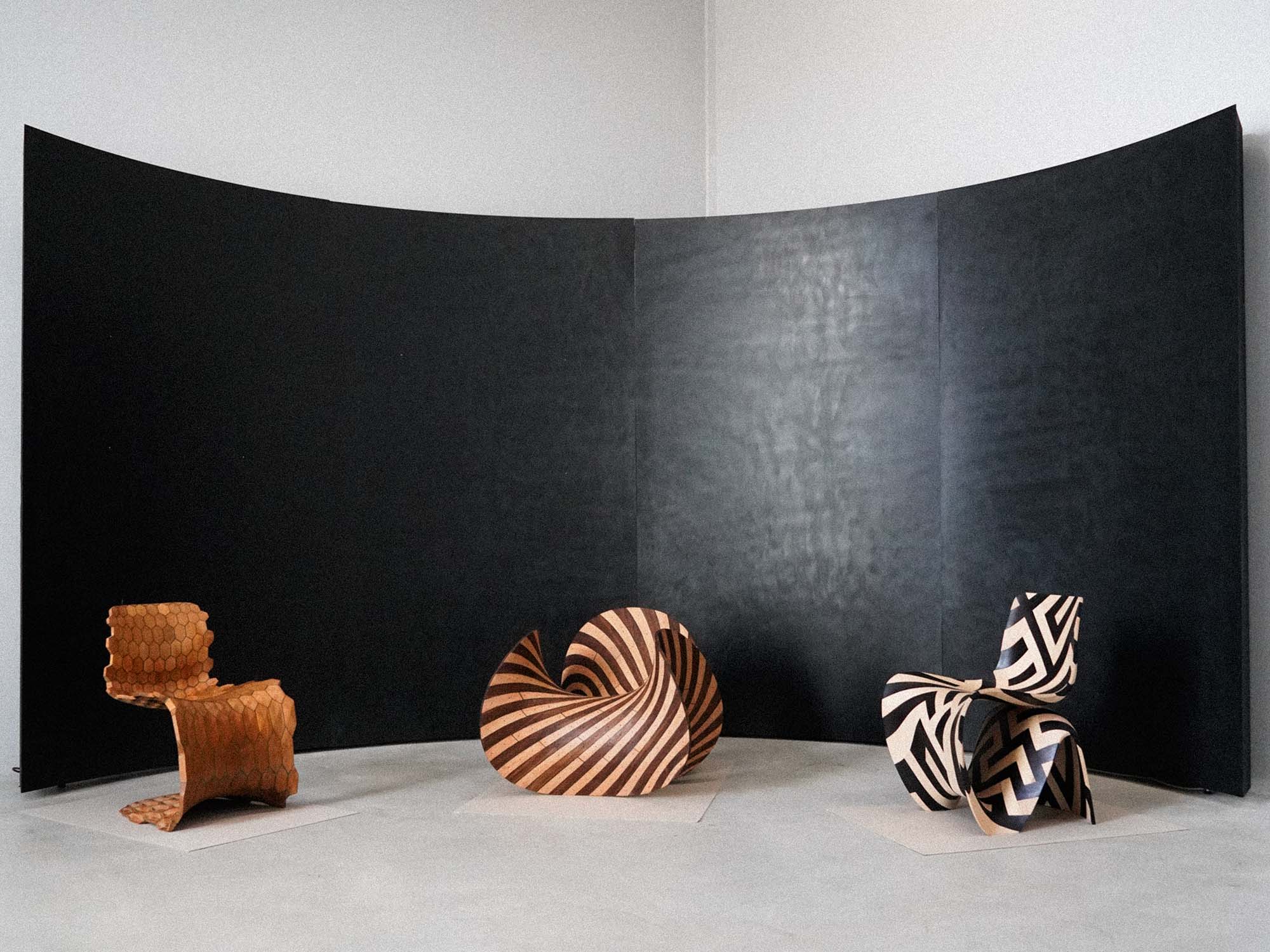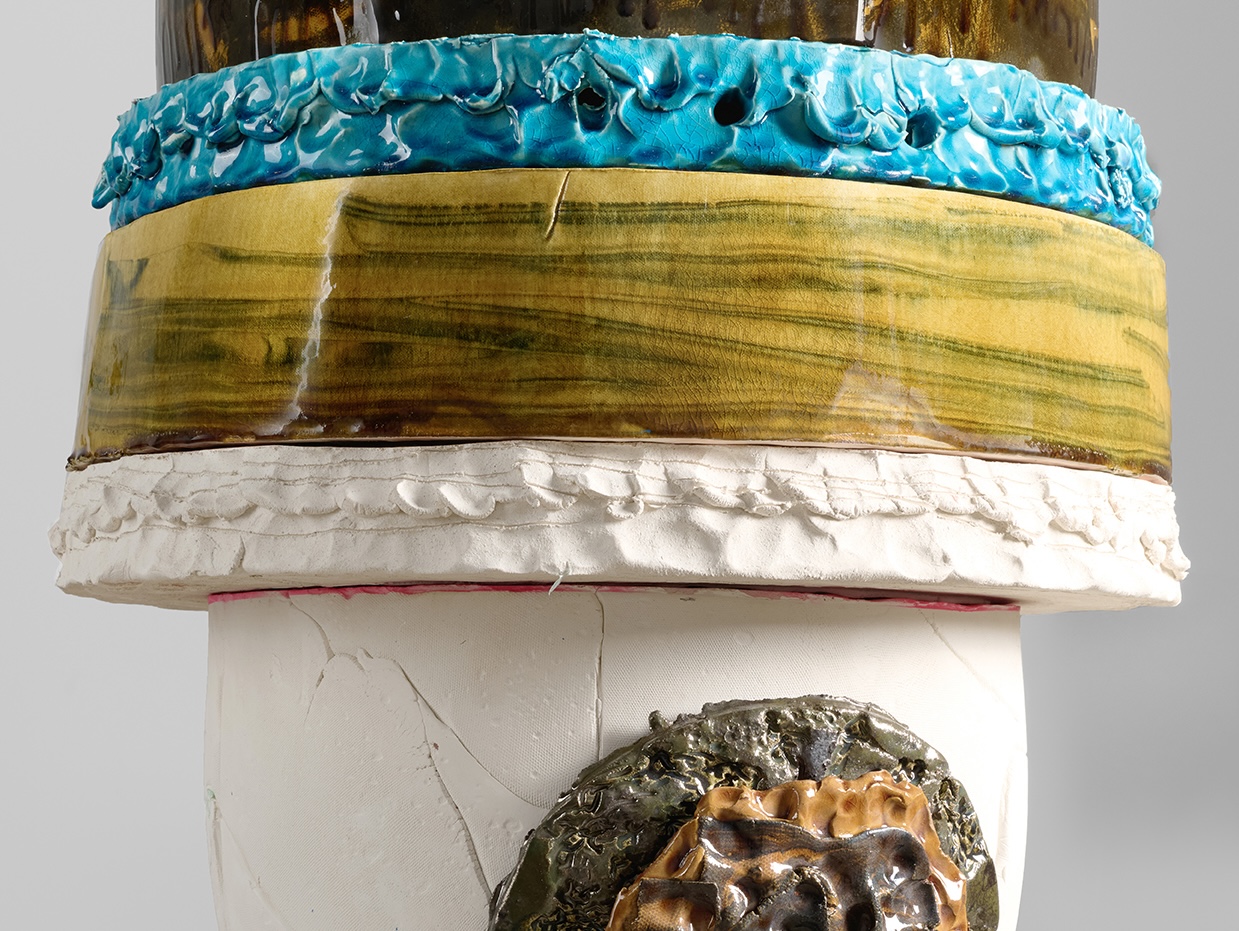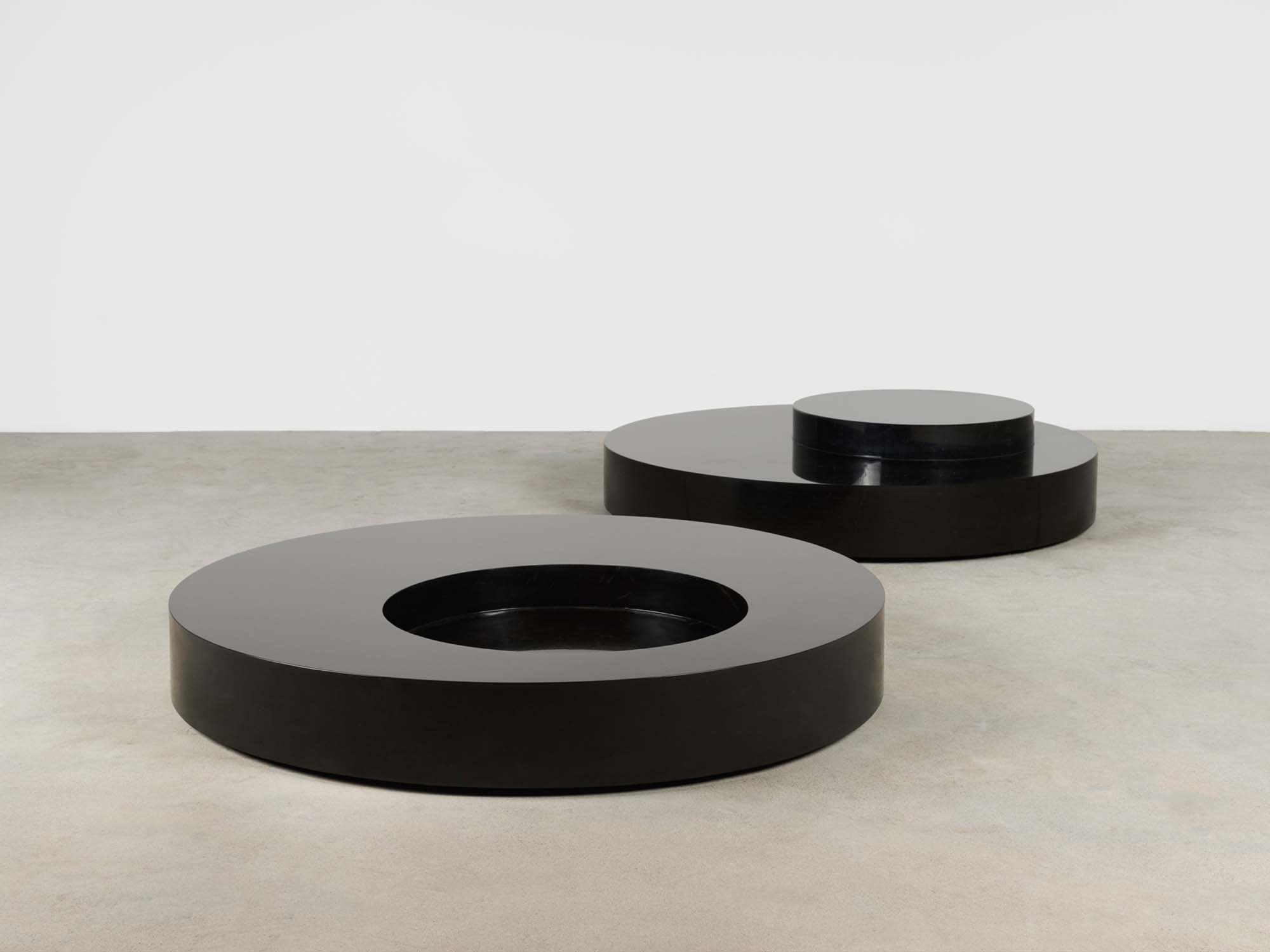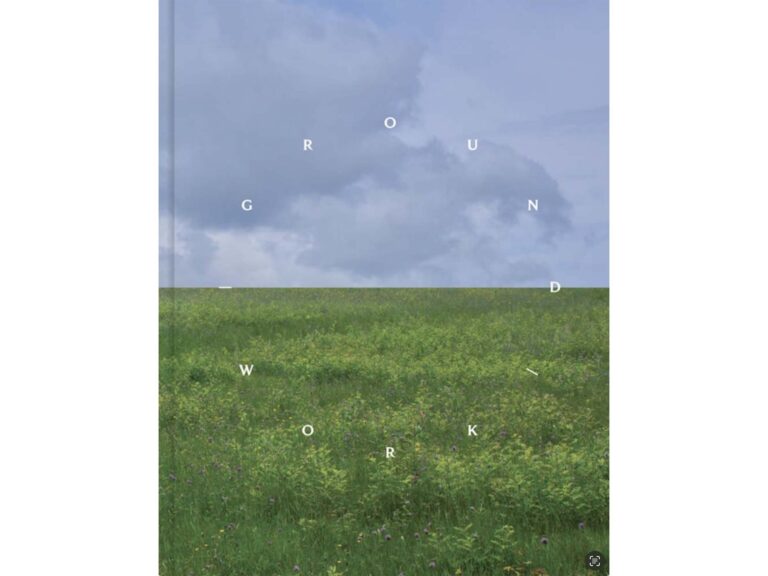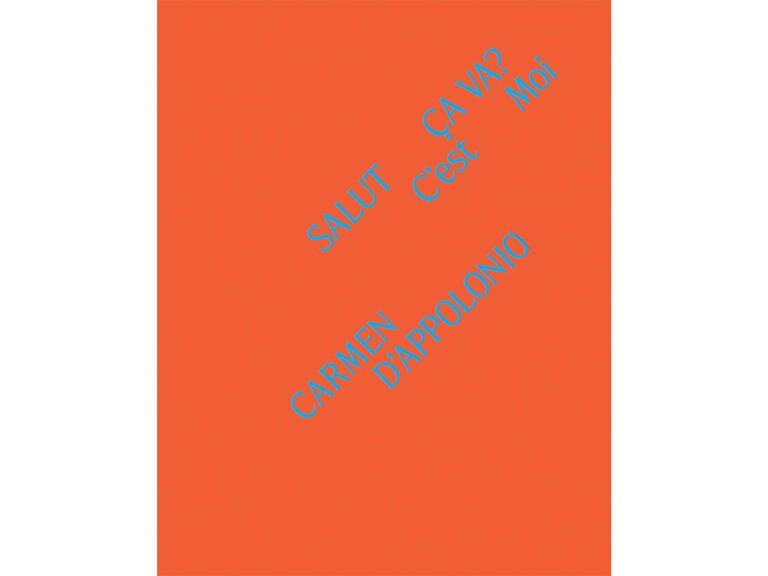Glenn Adamson
“The work that I tend to make comes together all at once, like a cast of characters. There’s always some weird older brother, the ‘black sheep,’ that doesn’t quite fit.” That is how Jonathan Trayte described his working process when I met with him in his London studio, earlier this year. Now that his exhibition Fruiting Habits has actually arrived, though, it seems right to extend the metaphor: the show is full to bursting, not just with black sheep, but pink wieners, yellow trees, juicy oranges, and a ruddy light-up melon.
It’s a weird world, Trayte’s. Yet it is also recognizable. His abiding concern is with everyday contemporary consumerism and its operations, its appealing gaudiness and latent slapstick humor. His hilarious carpet Big Feature, for example, reminds me of a time when my nieces were young and easily bored, and my brother and I invented a competition to make trips to the supermarket more entertaining. We called it the “Gross Game.” The rules were simple: each team has five minutes to find the most disgusting thing they can. My sister-in-law was on hand to arbitrate, but the winner was usually clear enough. Often it involved a meat product in a can. My nieces have now grown (the older one became a vegetarian). But at the time, the Gross Game served its purpose admirably. Not just a way to be the fun uncle, it was also curiously educational, a crash course in the sheer strangeness of what’s down the next aisle.
Trayte’s work holds a similarly lurid appeal. For him the produce section, the racks of tinned goods, are aesthetic quarry, ready to be mined. He is particularly fascinated by packaging of all kinds, not just the cheap-and-cheerful variety that is found in Britain, but also the idioms of other countries: some bright and bushy-tailed, others densely chromatic or harshly declarative. Where other artists keep a sketchbook, he has a ring binder of laminated labels that he’s collected on his travels. “The language is region-specific, though food is a universal need,” he says. “What interests me the most is that these layers of design are carefully orchestrated, to make us consume in a particular way.”
Of course Trayte goes far beyond a simple re-creation of product branding, like some latter day Pop artist. He may begin his designs with standard issue commodities as reference material, but once they have been put through the sausage grinder of his process, the results attain a wholly alien quality. And as much as he is fluent in the language of commercial exchange, he stands firmly outside it, deconstructing and reordering it much as an anthropologist might try to make sense of tribal customs.
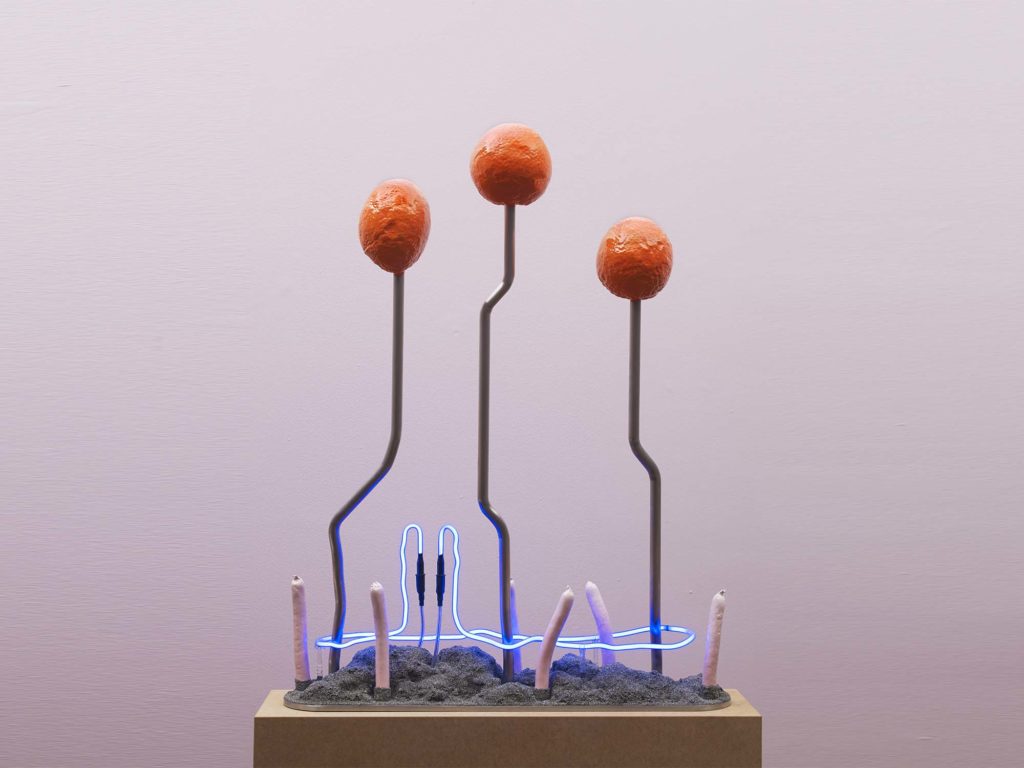
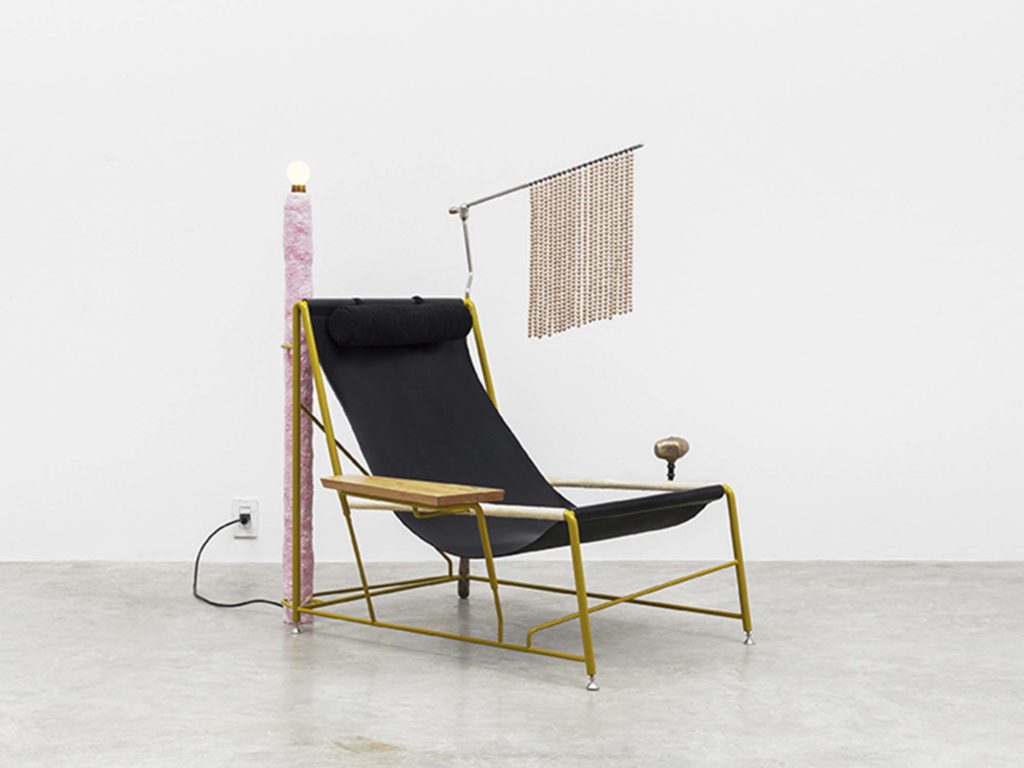
Witness Gol Gol, for example, a lighting design of last year and an important precedent to the works in the exhibition. Three bright orange orbs are held aloft on spindly rods, offered up like lollipops. They sprout from a garden-like bed of crushed granite, which also provides a habitat for a handful of finger-like soft pink appendages. A final, zany touch is provided by a tube of blue neon which races round the base. It’s a collision of suggestive forms, sitting comfortably neither in the domain of representation nor abstraction. On one level the design makes no sense – one cannot decode it as if it were a rebus. Yet every touch feels exactly right. The pathetic phallic growths, the rude health of the looming orbs, the electrical zap of the neon: they seem ingredients in a mad scientist’s experiment which has unexpectedly succeeded. My God… it’s alive.
Except we’re not in the laboratory, in this show; we’re right at home. Boca Chita has the general appearance of a kitchen island gone a-wandering. Its gently contoured work surface is embellished with appendages that would be strictly utilitarian, if one only knew what they were for. A little lightbulb punctuates the composition, doing more or less what a nose does for a clown. We see a variant of this gesture in Tal Tal, too, an indeterminate tabletop item with four denuded corn cobs stood next to a Cadbury’s chocolate orange in a half-peeled state. At least, that’s one way to read it. Certainly something in this lamp is coming on, or off. And then there’s Kandi, with two winsome willows overlooking a miniature pink landscape.
It too has a kind of perfection about it, yet its linear elements have the jumpy, jaunty quality of a quick sketch in felt-tipped pen. It’s an effect that Trayte captures again and again in this new body of work, often using bent tubular steel. Since Marcel Breuer, this material has been closely associated with modernist functionalism. In this show, though, it is a vehicle for a wonky and highly distinctive draftsmanship in three dimensions. Often he paints the metal in colors that skirt the hideous, yet are somehow delectable. The resulting, completely winning effect is seen in Trayte’s seating designs in particular – High Desert Chair, and the aqueous quartet Ocean Pointe, Noda Ball, Ewa Reef, and Kapolei. Then there is the show’s titular work, Fruiting Habits, which has the psychedelic intensity of a fever dream in a hospital bed. The steel, partly coated in plaster, races around the head and foot as if searching out quarry – which it perhaps finds in the pendant lamp, ideally placed for night-time reading.
Establishing Trayte’s precursors is deceptively difficult, partly because they are so numerous. Art historically, he’s an omnivore. One can certainly detect the influence of artists who dwell in abjection, like Sarah Lucas and Mike Kelley. His high-key color and half-arbitrary, half-perfectionist manner might prompt thoughts of Studio Alchymia and Memphis (Weekend Special, for example, recalls Michele De Lucchi’s 1982 Lido sofa), and before them Lapo Binazzi of Gruppo UFO. There are design notes of a more middlebrow sort, too, the telephone tables and typewriter stands of the midcentury era. Oddly enough, the most satisfying comparisons lie much further back in time, in the fecund creations of baroque decorative art: the paintings of Giuseppe Arcimboldo, with their anthropomorphically arranged squashes and cabbages; the heaving vegetal glory of 17th century ceramic centerpieces.
We too are living in baroque times, of course, times of wretched excess. This is reflected not only in Trayte’s imagery, but also the almost manic proliferation of mediums that appear in his work. Even a partial list of the show’s contents would have to include bronze, steel, foam, plaster, ceramic, photographic wallpaper, neon, stone, flocking, and pigment – and each of these is handled slightly differently in different sculptures. The “supermarket of styles” that was inaugurated in postmodernism here finds its material match.
Incredibly, despite this variety, Trayte executes all his work himself with only occasional part-time assistance. He has come by his breadth of expertise honestly, having worked himself as a fabricator and foundry specialist – he knows all about making work for other artists. Further back in time, he trained as a stone carver (yes, people still do that) and also was employed as a sous-chef. He says he probably learned his most relevant skills in the kitchen, making morcia from buckets of pig blood, stirring it by hand so it didn’t stiffen before it got to the stovetop. Even in our cross-disciplinary moment in design, he has an unusually anti-hierarchical attitude: “paint and food pigments, plaster and flour, sugar and silica, they all appear the same to me. Only some are more permanent than others.”
Thorstein Veblen, who first formulated the theory of conspicuous consumption a little more than a century ago, held simply that “The motive that lies at the root of ownership is emulation.” Trayte is operating from a different premise. Consumerism is rampant, that is for sure. But in our era of immediate gratification and cheap calories, when the very term “luxury” is primarily a down-market indicator, the meaning of what it is to consume has changed. The psychology is more complicated. Status and class are less at issue. Instead, questions of personal desire come to the fore, and with them, the reality of pervasive manipulation. Trayte paints a picture of this contemporary pageant, with all its guilty pleasures and attendant anxieties. His objects positively vibrate with that inherent conflict; nor are they exempted from the system. His work, too, is something to be consumed. And as a viewer of Trayte’s exhibition, there’s only one way to go. Swallow it whole.
This essay was originally published in exhibition catalogue Jonathan Trayte: Fruiting Habits, Friedman Benda, New York, NY, 2018.
